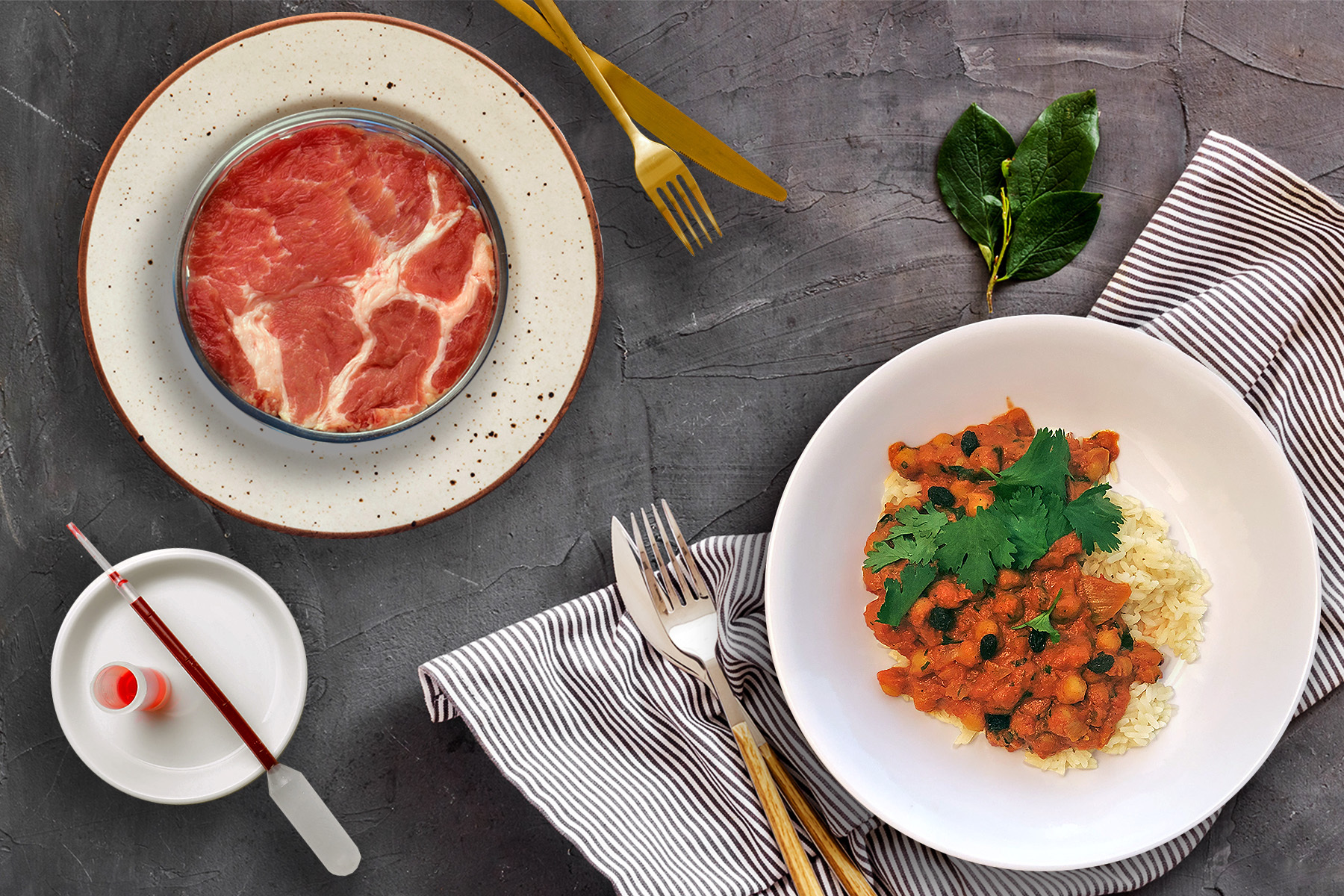It’s been said that, out of all the senses, smell evokes the most powerful memories. My most potent memories are triggered by the smell of onions lightly sweating in a pan. A pinch of salt, a dash of ground coriander, chili, and turmeric. What follows is the vision of bright yellow droplets of oil gathering on white china and ratty linen placemats covered in autumn leaves, the sound of a whirring fan and the tail end of a Malayalam folk song, the touch of the smooth dining room table and cold silverware. What comes last, and is most anticipated, is the taste. The elastic bite of chicken appam, the sour tang of chemmeen kari, the spicy succulence of karimeen pollichathu.
When I was little, I used to watch my Ammachi cook in her suburban-Ottawa bungalow, where the family gathered to enjoy these traditional Malayali dishes. I often found myself hoping I could replicate them once I got older. But, the more I think about the future, the more I worry about how difficult it will be to sustainably access the ingredients I would need to assemble these meals.
It’s no secret that our current farming and eating practices are unsustainable. In 2019, agrifood systems were responsible for 31 percent of greenhouse gas emissions. According to a recent report from the Food and Agriculture Organization of the United Nations, large-scale commercial agriculture accounted for 40 percent of tropical deforestation worldwide between 2000 and 2010. Animal products are a particularly ruinous culprit as they account for 83 percent of the land used for agriculture yet provide only 18 percent of the global calorie supply.
As the global population continues to rise and the effects of climate change become increasingly apparent, younger generations will be forced to shoulder the necessity of transitioning industries to more sustainable options. For many people, the seldom-considered luxury of a hearty meal might be a large part of that adjustment.
While this might seem overwhelming, it’s not insurmountable. In the past few years, potential solutions to help lessen agriculture’s environmental impact—like innovations in animal feed, vertical agriculture, plant-based meat, and insect protein—have all emerged. But I’ve found myself most interested in progress around the creation of cell-based protein—growing animal proteins in a lab—not because this is the only solution but because of its implications for sourcing the staples we know and love.
In 2013, a hamburger created by a Dutch scientist was taste tested on live television. Burgers are perhaps one of the most commonplace fast-food items in North America, but this one was anything but. Instead of coming from a factory farm, it came from a lab, heralding the rise of a field that has since been dubbed “cellular agriculture.”
Cellular agriculture is the science of growing animal proteins—like those found in meat, cheese, and leather—in cell cultures instead of slaughtering livestock to make products. Unlike plant-based proteins, such as those found in the Beyond Burger, which are cultivated from plant ingredients and manipulated to resemble animal proteins, cell-based proteins are genetically identical to those you would find in, say, a cow.
Cellular agriculture works like this: cells (like muscle or stem cells) are retrieved from a cell bank, a storage facility for all kinds of DNA. They are grown in a culture media containing all the nutrients they need to thrive and multiply, then they are put into a machine known as a bioreactor which has the ideal environmental conditions for them to mature into tissue—i.e., meat.
Growing meat presents significant advantages over conventional ways of raising livestock. Current projections for sustainably produced cultivated meat show it has only about 8 percent of the global warming potential of cattle. It also uses only 5 percent of the land that cattle farming does. Its smaller ecological footprint would limit agriculture’s infringement on necessary ecosystems, and its lack of reliance on antibiotics and animals in general would hinder the development of antimicrobial-resistant pathogens and decrease violations against animal welfare.
As of the end of 2020, there were more than seventy companies focused on the production of cultivated meat. The field has attracted investment from notable figures, including Bill Gates, Richard Branson, Leonardo DiCaprio, Ashton Kutcher, and Robert Downey Jr., and partnerships with large animal-protein firms, including Tyson, Cargill, and JBS. At the end of 2021, the field had brought in more than $3 billion (US) in total investments, compared to the previous year’s $1 billion (US), according to CellAgri, which collects insights on the cellular-agriculture industry.
A number of countries, including the United States, Australia, the United Kingdom, France, Germany, Japan, and Greece, have nonprofit organizations dedicated to fostering public understanding, developing talent, and funding research to support the field. Within the past couple of years, conversations about the governmental frameworks necessary to bring these products to market have begun in several countries, with Singapore having the world’s first sale of lab-grown chicken nuggets, at the end of 2020.
In Canada, the field still has a ways to go. As of November 2021, there were thirteen Canadian startups focusing on varying applications and stages of the cellular-agriculture supply chain. There aren’t many incubators, accelerators, or public-funding streams dedicated specifically to cellular-agriculture research and development, outside of a recent Ontario project, but there is potential in many existing programs.
While there are no official regulations pertaining to cultivated meat specifically, an organization called Cellular Agriculture Canada—in partnership with Health Canada and some federal agencies—is working on furthering this legislation. This is promising, as an Ontario Genomics report estimates that cellular agriculture can be a $12.5 billion annual opportunity for Canada.
It is, of course, probable that lab-grown meat may will seem unnatural, strange, or perhaps even repulsive. It doesn’t align with the bucolic, pastoral visions of red barns and sun-baked fields we so often associate with the origins of our food. Since 1941, the number of farms in Canada has decreased by approximately 75 percent, although the total amount of farmland has remained relatively constant, signifying an increase in average farm size. The reality of the situation is that, in North America, most of our food doesn’t come from these idyllic postcard landscapes. It comes from fields of monocultures cultivated with military precision. It can come from barns packed with metal sheds barely larger than the animals they contain. That’s not exactly natural either.
Cellular agriculture, of course, is not without its criticisms, most of which focus on the way it is implemented. What bioprocesses will ensure that its environmental sustainability is actually realized? How will we make sure it is safe to eat? How does taste and texture factor in? How does it reckon with our society’s underlying lack of respect for nature? How will it impact various cultural traditions? What will be the effect on the livelihoods associated with traditional farming? Not insurmountable questions by any stretch of the imagination but questions that scientists are working to answer in order to maximize the good brought about by this technology.
As far as agriculture goes, cellular agriculture very well could be the next revolution. Many of the historical developments in agriculture were predicated on making food access more reliable and more efficient, like a well-oiled machine. As a species, we supposedly transitioned from a hunter-gatherer lifestyle to planting seeds and raising animals to try to imbue our lives with a sense of certainty in the face of an unpredictable climate. The Industrial Revolution added machines to the mix and made the menial tasks of the harvest faster. If the climate crisis will make a lot of land we use for food production unworkable, why not take the next logical step in the meandering path toward this well-oiled machine—actually using a machine?
When I was thirteen, I became vegetarian in order to alleviate my personal burden on the environment. As much as this dietary change made sense for me, it’s not something that the vast majority of the world is willing to adopt. But we will have to make changes if we want to meet our climate goals. I am hopeful that cellular agriculture can be part of those changes so that we can create the things we know in love to eat in a better way.
Cellular agriculture is unlikely to be an overnight revolution. It’s much more probable that, one day, you will see another option in the grocery store bearing the label “cultured” or “cultivated” right in between the conventional and plant-based options. Maybe this way, as the technology and regulatory frameworks improve, cellular agriculture will become how more and more Canadians prefer to source their food. Maybe this way, as people become more comfortable with it, it will be the way they choose to construct the meals that are the centrepieces of their families’ fondest memories. Maybe this way, when I try to emulate the rhythmic intuition of my Ammachi’s chicken curry preparation, these foodways won’t be beneficial only for the smiling faces crowded around my dining room table but for the planet and all life everywhere.






